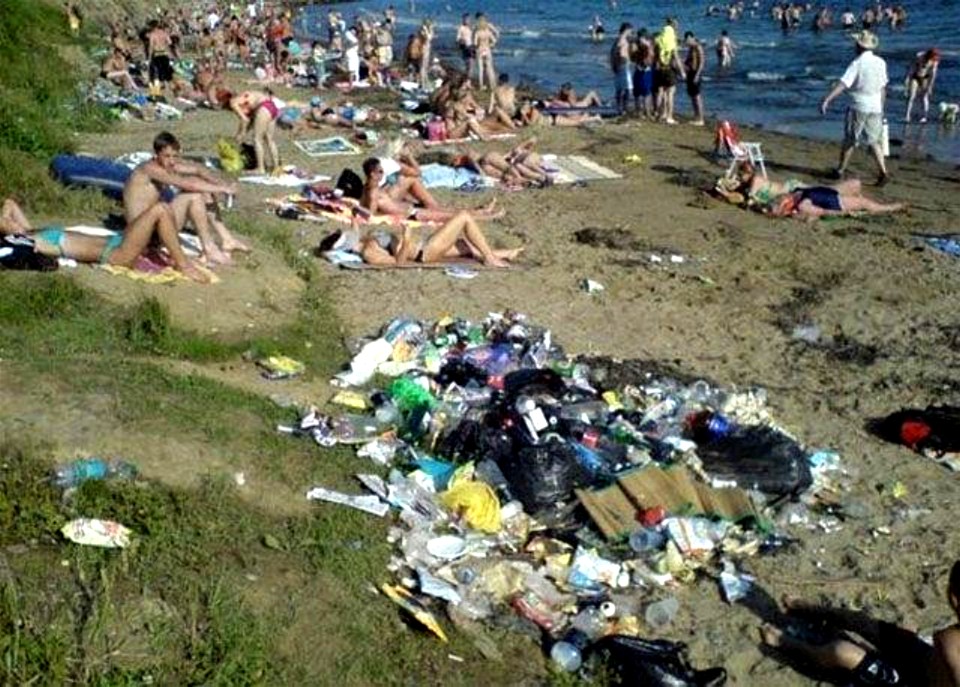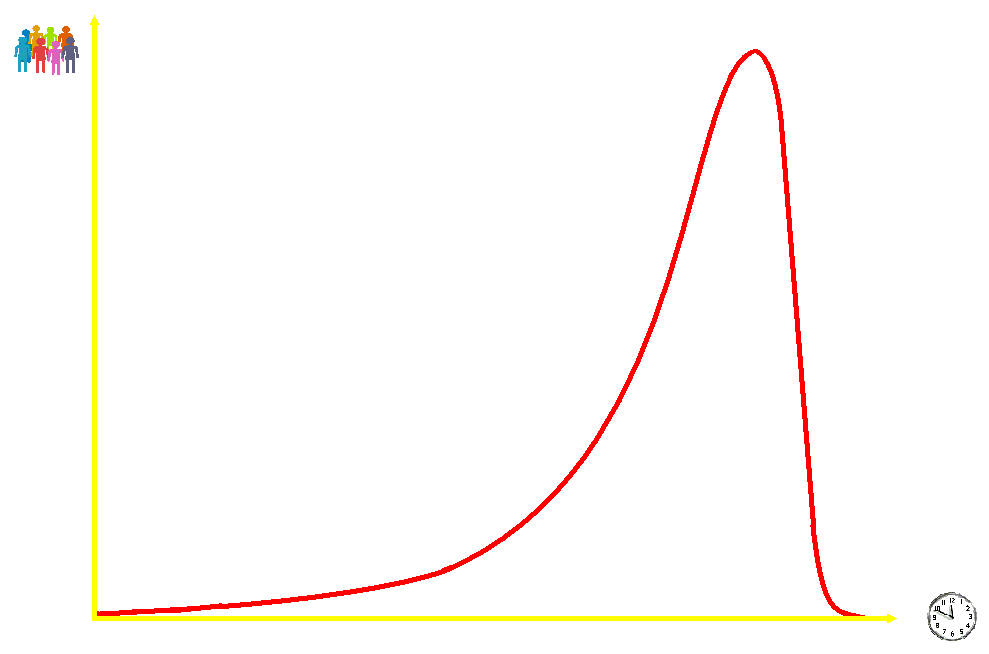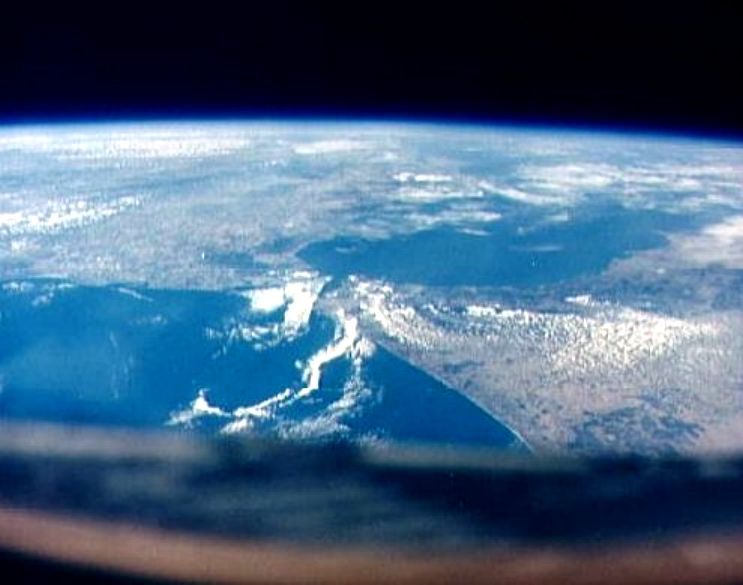
From what we see here, what represents the height of the tallest tree in this cosmic vivarium?
Isn't it incredibly small and fragile?
By Mimi Mato, Wednesday, April 23th, 2013, for the original French version.
English to be fixed.

From what we see here, what represents the height of the tallest tree in this cosmic vivarium?
Isn't it incredibly small and fragile?
We walked some 7,100 km of mineral, solid then gaseous matryoshkas which constitute the planet Earth, upward up to the inter-sidereal void, these layers being of decreasing density and increasing mobility.
It is rather small with regard to the more or less unconscious "protection" we suppose it offers us against the big inter-sidereal vacuum
It is what separates Fukushima (Japan)
It is the distance between
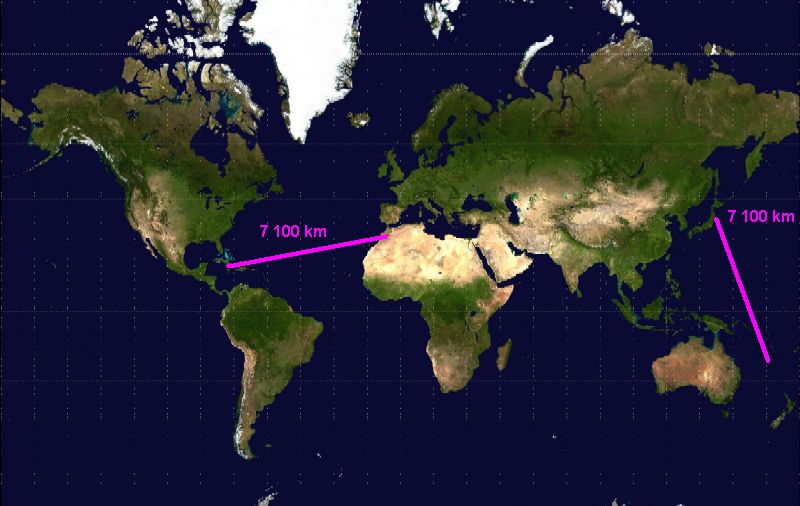
Within this, the biosphere, say 99% of which makes it, rarely rises to 50 m (excluding the rare organisms driflting in altitude, and the equally rare ones living deep underground).
50 m, it is 7 millionths of these 7,100 km. It is not even a thin steam layer on a window. It is perfectly invisible even if we never get out of it, up to the point that some believe it contains the whole universe, that it is infinite.
And more, when I say 50 m, I mean these places - far from being the majority - where Nature occupies the space from the humus to the top of trees which reach this height. On the "Mall parking lot" or on the main square of the city centre, these 50 m are reduced to zero, at best a few centimeters in some places (grass at the foot of street lights, or along the gutters, if any). On average, the biosphere, the layer of Life on Earth, does not reaches the height of our knees.
Life dwells entirely within this thin film which tries to cover all the solid or liquid surfaces on Earth. It thickens where it can, since it originated in the Precambrian oceans, 3 to 4 billion years ago.
The total Earth surface is of 510 065 700 km².
You notice that the total Emerged Land area is less than the Pacific Ocean alone, that it represents less than a third of the Earth entire surface. This is the absolute totality of the available space for the terrestrial life if it could manage to settle everywhere, which is not the case. There is no other possibility (putting apart some extremely marginal and fascinating organisms, absolutely not representative of the average).
About the marine life, the vast majority is concentrated close to the surface (yet at 150m depth it is 99% dark), especially along the shores, in particular in the intertidal zone. It almost doesn't go below the continental shelf limits (which, on average, are at 150 m depth too). Since the planet exists and until today, the marine life is a sparse layer of a hundred meters thick confined mainly around the emerged lands. Curiously, I did not find any evaluation of the total area of the continental shelves, yet most of the marine life is there. The remainder, below, is not really quantitatively significant, even if it is extremely interesting in quality.
In volume, the Earth radius is about 6,366 km, thus its volume is roughly of 1,080,658,687,000 cubic kilometers, more than a trillion cubic kilometers. The total land surface is roughly of 149,400,000 km². Considering that the average thickness of the terrestrial biosphere is within 50 cm, the volume of the terrestrial biosphere is near 74 700 km ³, a cube with an edge of 42 km,a sphere of 52.25 km (without crunching anything inside), or roughly 0.07 millionth of the Earth. For the marine biosphere it is more difficult, but it is necessarily less as all the continental shelves are necessarily much smaller than the emerged lands.
The biosphere total volume is close to 100,000 km ³, or about a tenth of millionth of the Earth, a sphere with a diameter of 57.6 km. If the Earth was the size of an orange, the biosphere layer would be at the scale of atoms.
Thus, we, ground vertebrates, live in a kind of incredibly thin vivarium more than tiny in size, although we always believed, and we too often still believe, that it is infinite.
"Far thinner than a condensation on a window."
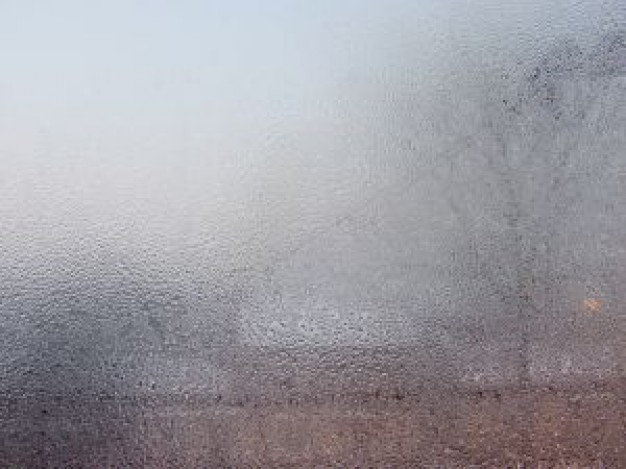
I'm not going to re-portray didactically the pyramidal organization of biomes and ecosystems, it is easily available everywhere and relatively well known. I'll just quickly regain some definitions, as a glossary, so that we can continue this discussion together with the least biologist ones of us:
Reading these definitions let guess that, like the layers stacked from the center of the Earth to the interstellar space, ecosystems fit together into each other from the smallest to the largest. The largest are called biomes and their full set makes the biosphere, which is, thus, the largest of these Matryoshkas.
The usefulness of biomes is to consider live sets more different between them than inside of them. They allow us to see significant biological boundaries, to compare the biodiversities of "huge" regions, and to measure the human activity impacts.
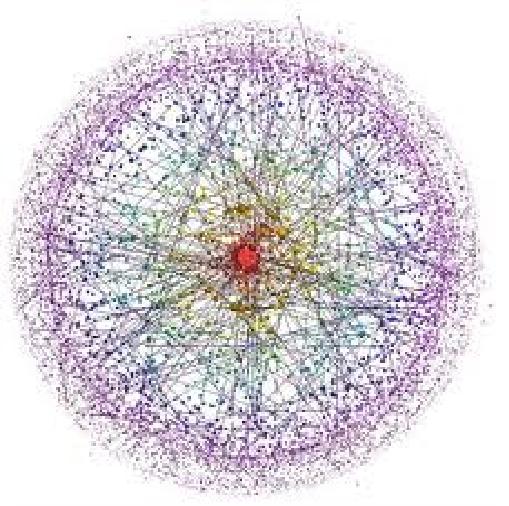
Individuals of a species are the result of the adaptation of their genome (reminder: genetic inheritance of the species), of the some cells constituting them in front of the limits to their physiology imposed by the physical and chemical environment of their habitat (climate, soil type, topography, etc..) as well as those imposed by their relationships with other species of their habitat (mimicry, escape or attack strategies and distances, etc.).
Given this, it is clear that ecosystems are sets of all the more greater complexity than that their biodiversity is important because all species in an ecosystem, in addition to their own natural habitat factors that limit them (climate, . topography, etc.), are more or less interdependent: Symbiosis, commensalism, neutralism, amensalism, pathogenesis, parasitism, predation, etc. are names bonded onto this thin gradation of relationships ranking from indifference to complete dependence.
However, the more an object / phenomenon, living or not, is complex, the more it is inherently stable, but also structurally weak (eg: the most complex software are always those with the most errors ; eg: A car is more easily out of order than a wheelbarrow). The complexity of large ecosystems is such that it is not yet known, although their outlines are, a few.
We could compare an ecosystem to a kind of heavy machinery where each cog is represented by a species, but as the most rudimentary biome easily shelters several hundreds of known species (we do not know all yet), and as it is by thousands in the most elaborated ones, it gives some idea of the extent of this complexity (and of our ignorance). Furthermore, within a same ecosystem there are mechanisms, say sub-ecosystems, having very little contact among them, even coming into contact only by accident, though each being made of complex interrelationships between their own species.
This complexity is so huge that it is easy to drown quickly in, especially as the knowledge we have is actually basic though quickly changing: Ecology is the youngest science. It still stutters, and tries to expand, while the Biosphere experience is more than three billions and a half years old.
If the power of Life is able to absorb and to cover physical elements up to integrate them into the humus, human buildings included (cf. Mayan temples in Amazonia, etc..), this absorption runs much faster when it happens to a biological element, as hard as it may be. You will notice here that mineral things are less complex than alive ones, in diversity of elements as in internal organization. (Conversely, we could say that fossilization is an absorbtion of the alive by the dead)
Usually, a roof, a pylon, a house, a not-complex object disintegrates and decays slower than an alive one. Even for these last ones, time destroys their mineral part only at the end.
It is quite the reverse during disasters: Big storm winds drag leaves and branches away easier than whole trees, while they carry whole roofs away. A tsunami washes everything away, but, mainly, homes and objects are more easily dragged than plants, trees included. A snow avalanche breakes out a pylon easier than a tree or a flexible plant.
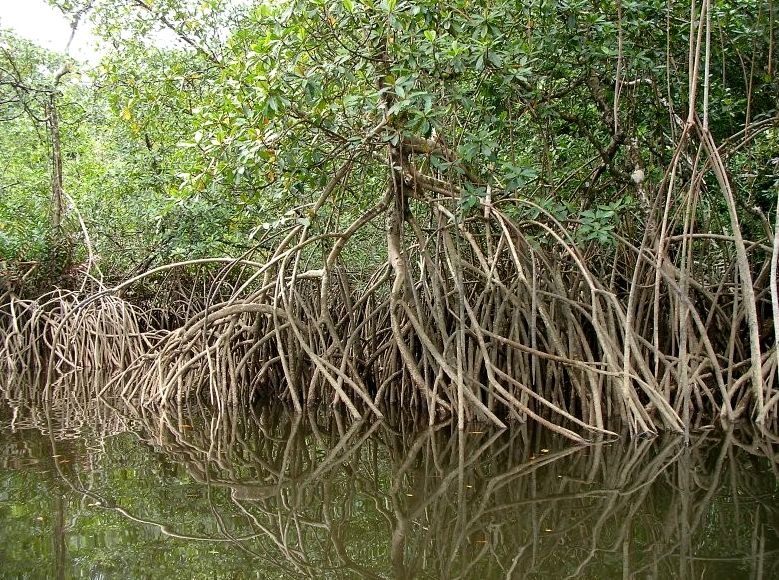
In short, which is complex - alive or not - resists better than which is not, but when facing serious shocks this complexity turns things to be weaker, more fragile.
This barbaric term, derived from the ancient Greek, means literally "well fed." Initially, it was not identified as a threat.
Basically, the challenge of any species, the implicit "aim" of its genome, is to permanently take up and keep the largest volume possible of its surroundings, while meeting at best its basic needs, being "well fed" at best.
As such, "A bellyful is a bellyful": Since anything can be used as a resource to be "well fed", for all individuals and regardless the species, it is "good to take" even if this "anything" is alive, even from its own species. It is a reflex as old as the earliest forms of life. It is which lies under all the Life evolution from its beginning. It owes to be still so fundamental to any form of life today to the success it brings for its genome conservation within the Biosphere.
On the other hand, Life hates void as monotony. Somehow, for Life, void or uniformity, it is the same: Any homogeneous, uniform space, being dead or alive, is a "splendid market to be conquered". The first species which finds a way to exploit it for its own can quickly explode its workforce, so can grant a greater stability to its genome, enforces its durability.
Why is it like that?
From what we know today, life sprang along the Precambrian coastlines where the water containing oily dusts of amino acids (from the atmosphère of the time: ammoniac, methane, hydrogen and water, cf, the Miller experiment, and condensed in rains by storms) has been shuffled along the shores with "classical" mineral dusts during hundreds of milleniums in a kind of weird spongy and rather homogeneous foam of which nothing remains today, but which was a soup of coacervates, a superb "market to conquer" that Life conquered.
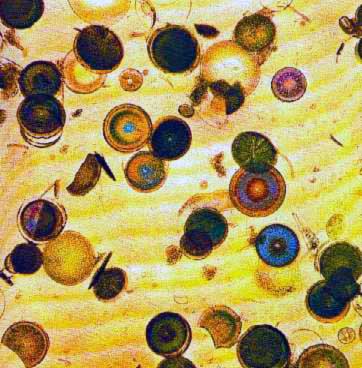
Life began by "eating this foam", slowly, specializing itself gradually, always following the precept of "market to conquer" as soon as a component or some form of life became abundant and homogeneous enough to become something "edible." Specialization on the available "markets" created diversity, increased the complexity of the interrelationships between "markets" and "operators", increasing so the overall complexity of life.
By the way, these 3 to 4 billion years are to be put into perspective with the Continental Drift: Continents, like a foam "skin" on a milk starting to boil, have always and several times moved, been broken, been scattered then gathered (the last known gathering date of 250 million years ago, but there were others before) sank, reappeared. The total shoreline length has been variable, which even caused some biological crisis, of which some major ones are used to separate geological epochs. Climate and main ocean streams have always been changing too, of course.
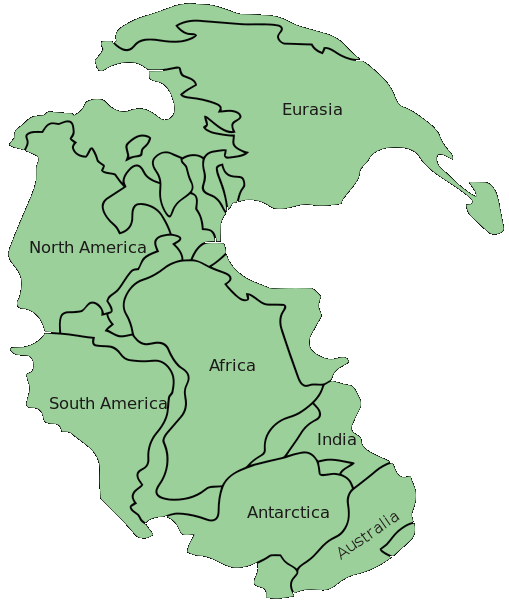
Thus, diversity was, and still is, something imposed also to genomes through the environment versatility (in geological terms): The best warranty for life to adapt to changes, whichever they are, is its complexity. The basic principle which allows this complexity is, for each genome, this search for the best possible "well fed", for its eutrophication.
This process creates a higher level of complexity, the one of ecological niches and series:
As we have seen, the ecological niche is the function of the species in its ecosystem, "its job." It defines the basic interrelationships between all species with their environment. Each niche is, somehow, a cog in the general mechanism of any ecosystem. Since that is only a function, a role, several species may take the same niche or "be breaking up the market" in very similar niches. It's competition.
Just like each "atom of life" which makes it, each ecosystem is evolving in an attempt to remain compatible with the environment it occupies. Ecosystems evolution is known enough to allow that the common features of their evolution, their outlines, can be defined for each biome. Indeed, each biome falls within a climate because it imposes the physical environmental factors, directs their field of possibilities, forces their specificities. (There may be several biomes under a same climate, but the reverse is never found).
In general, depending on climate and soil composition (limestone, silica, etc..) or/and water (minerals salts), species are different. However, any "zero degree of life" place always tends to turn to a saturated one, following always the same way:
The evolution of these biocenosis is fairly standard within a same biome, it is given the name of ecological serie or vegetal succession (I prefer the first term because animals do like plants, all a biocenosis evolves in a same run, plants AND animals):
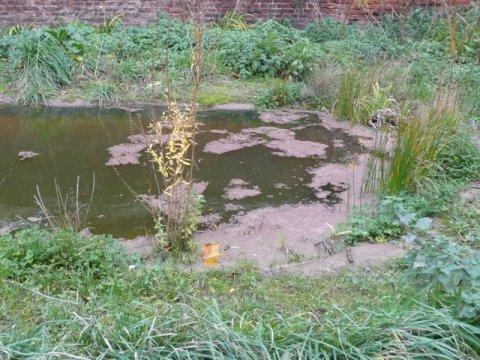
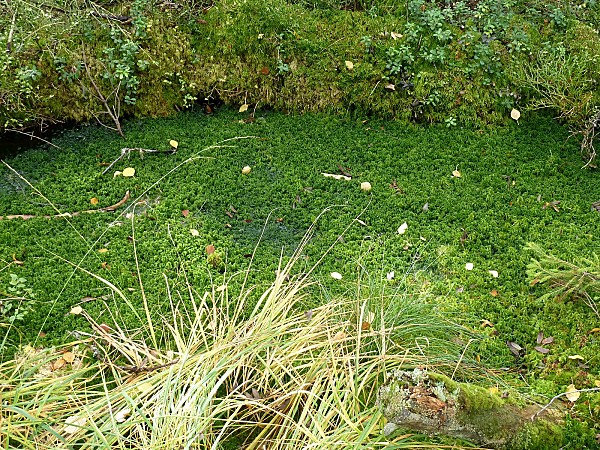
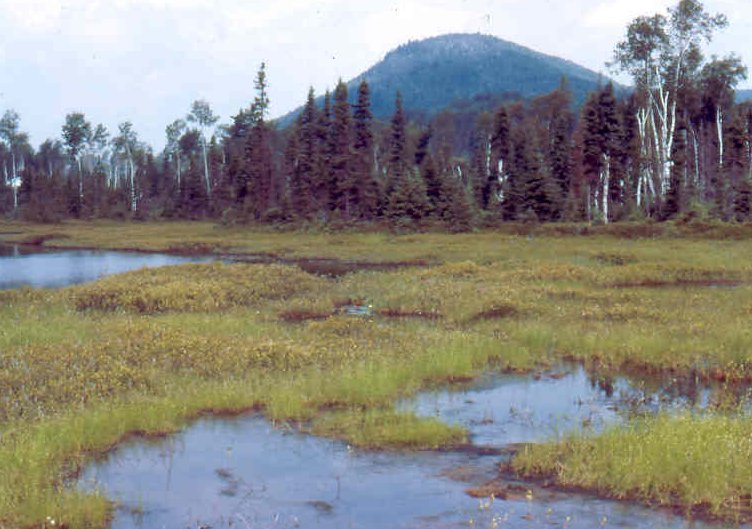
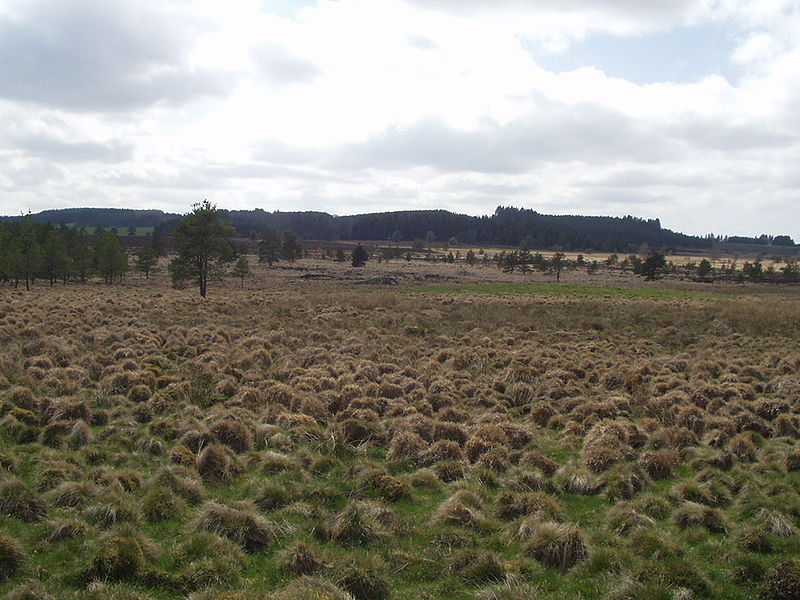
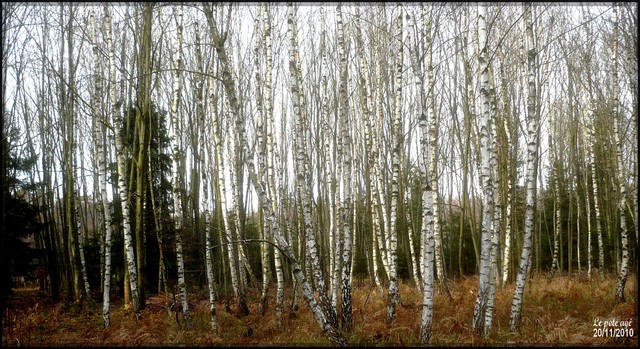
Life exists only in its evolution, its complexity.
Let's see how is programmed the birth, the life and the extinction of a species within an ecological series:
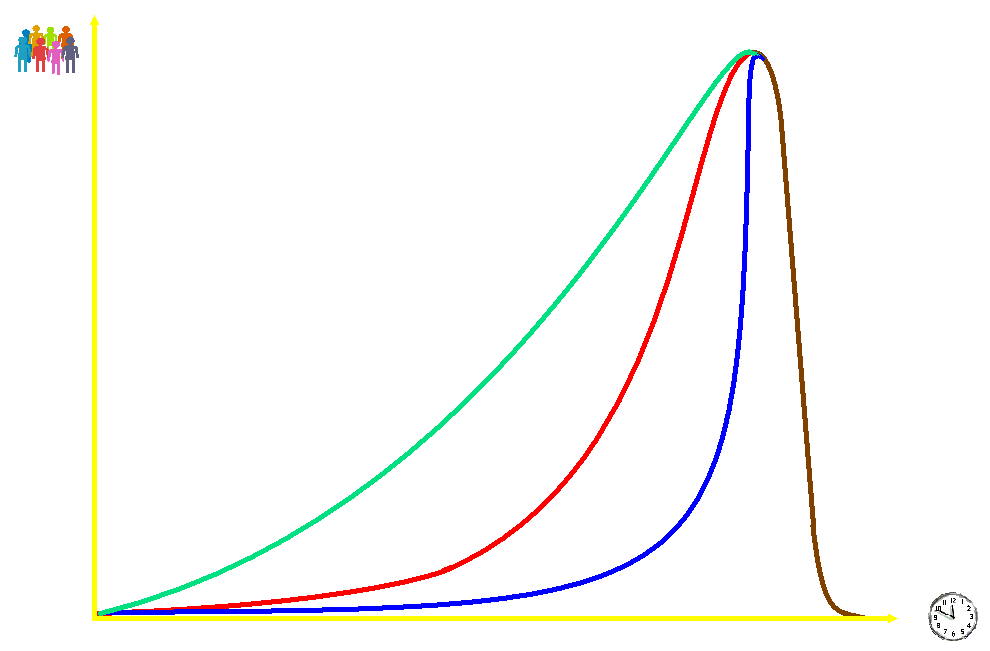
The less the species demographic explosion is violent (green curve), the less the biotope saturation is fast, the less its extinction is brutal, and conversely (blue curve): In this last case, the species don't even get the time to start to try to adapt.
Why such a shape for this curve? Because this world is not infinite, like saw at start, it is extremely limited:
Any species tries to place itself at the best possible place to dwell the best / be the less bothered possible by the topography, climate, resources, waste, parasites and predators.
However, the more it thrives, the more it reduce, for each individual, the quantity of space and resources, and increases the one of wastes, parasites and predators (in possibly raising new ones: The number creates a "market"). The more it thrives, the more it becomes an aberration in its ecosystem because its density becomes dangerous for its ecosystem survival, and the other species naturally "try" to reduce it: Competition for resources limits the individual chances for survival, their increasing number turns the species biomass to be "a market to take", it also induces the saturation of the environment by the wastes of the species. Because of all that, it exists a threshold, specific to each environment, from which any species outbreak leads to its extinction, stifled by its internal competition for resources, by its wastes, and by the pullulation of its predators and parasites.
As indication, the human species curve is this one:
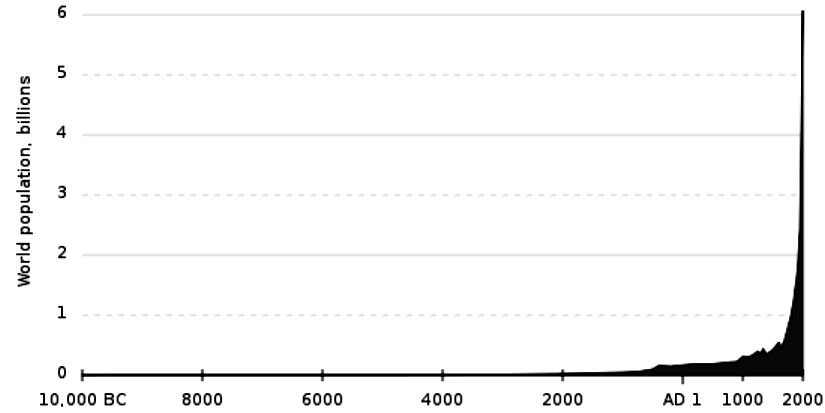
To regulate this "explosion before extinction", the 3.5 billion years of evolution of life have not yet allowed to develop a natural mechanism other than limiting births, but this goes against the genome survival fundamental axiom: the search for eutrophication.
For a species, when conditions are harsh in its biocenosis, if it is not prolific it can't resist: the extinction comes fast. So the more a species is prey and live in wide spaces, the more its birth rate is galloping: Its genome survival relies on that. Conversely, the more predatory it is and/or isolated in a small space, the less it reproduces quickly, always for the survival of its genome, but, then, the risk is great because as soon as environmental conditions seriously change they are the first to get extinct.
In this regard, humans are a species like the others, among others. Its overall behavior is the same as any other one, bacteria or elephant. The big difference is his great sense of time, something that gave him an unprecedented supremacy in the history of life on Earth (although some other species also have this ability, to a lesser extent).
Consciousness of time expresses mostly through the anticipation ability. This is a very old ability developed from necessity in most animal and plant species since long. Consciousness of time is vital for the prey which tries to escape its predator, for the predator which tries to grab it, for the plant which must withstand physical (seasons) and biological attacks, all the living beings are "dealing with time". Consciousness, in the way we usually understand it, is not necessary, but it gives a better chance for survival and if, in his infinitely pretentious and solipsistic navel-gazing, humans have long considered that they were the only ones to own it, we know now that it is not the case since millions of years before they appeared.
The tiny difference with most of other living beings is our ability to use this consciousness to conceptualize. Minimal difference, but which is all but minor: Not only we know how to count (like some other species), but in addition, we know how to create complex concepts on our calculations, and, as elements of a virtual world, our concepts and calculations are easily applicable onto the palpable reality. Our ability to reason far away from the reality is our great strength, and our great weakness.
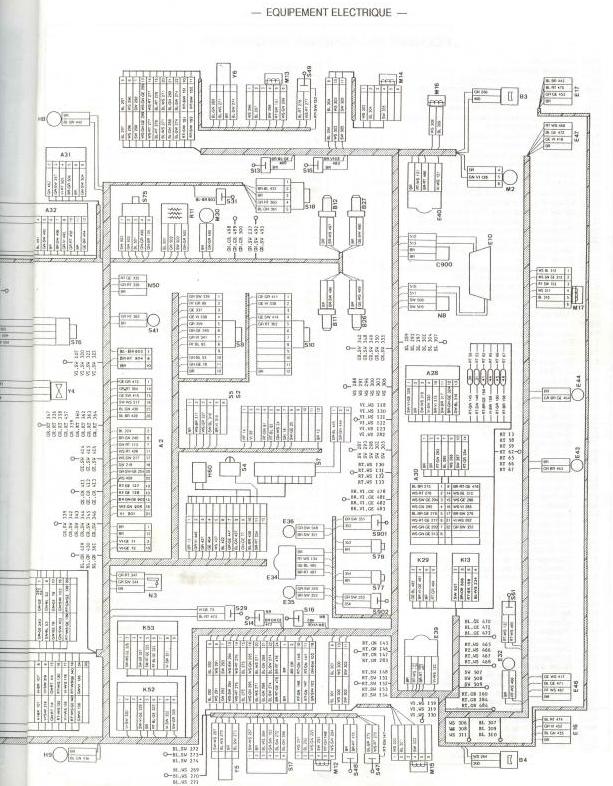
No other species showed any implementation of this option, although there are many approaching this stage (consciously architects species, consciously developing rudimentary techniques species, etc..). We are the first ones, and this primacy is changing the entire Biosphere since we passed "the next gear", the "Systematic" and massive industrialization.
The weakness of this is that, as our abilities to eutrophication are turned infinitely greater than those of any other extant species of our size, and as we always strictly follow the fundamental principle of the "well fed", the "anything, right away, no matter what", our global population explosion is one of the most brutal ever recorded on Earth for any species.
We have eliminated almost all natural predators of our species (those we developed from inside excepted), we can significantly reduce almost all of our pests and diseases. Our ancestral fertility has not had the time to adapt to this radical change.
Our industry allows us to operate normally inaccessible resources, whether being in the deepest ocean or its basement, from the hightest of the atmosphere, up to the most atomic, chemical or physical one: We started to exploit fantastic energies before having finish to understand their true roles, limits, and dangers. We even play with the stellar energy, the nuclear one.
Under this principle essential to life, we drain to us all the available energies without any regard for the ecosystems which support us and from which we believe to be "liberated " by hiding ourselves behind concrete structures and scraps. The Biosphere suffers an unprecedented crisis as much in terms of intensity, speed, and size (according to different scientific studies, over three entire species disappear each hour while the pace of our births adds on Earth more than four humans each second, mortality deduced, whereas it was only 2 per second 50 years ago only). The impact is exponential too: Massive Destruction of habitats, drastic simplification of ecosystems over millions of square kilometers, uncontrolled mixing of biological communities by more or less desired additions of species from other biomes revealing then as invasive in biological communities where no parasite or predator is able to control this as unpredictable as a sudden "new market", but that compete directly with the vernacular species, gnawing away the very structure of biocenosis because it occupies a niche without local equivalent, straddling on several local ones, etc.
However, an ecosystem is a complex mechanism where each cog must play its role so that all can continue to be maintained, otherwise it is simplified, then disintegrates, and completely collapses. Today, we even began the study of Ecosystem Collapses:
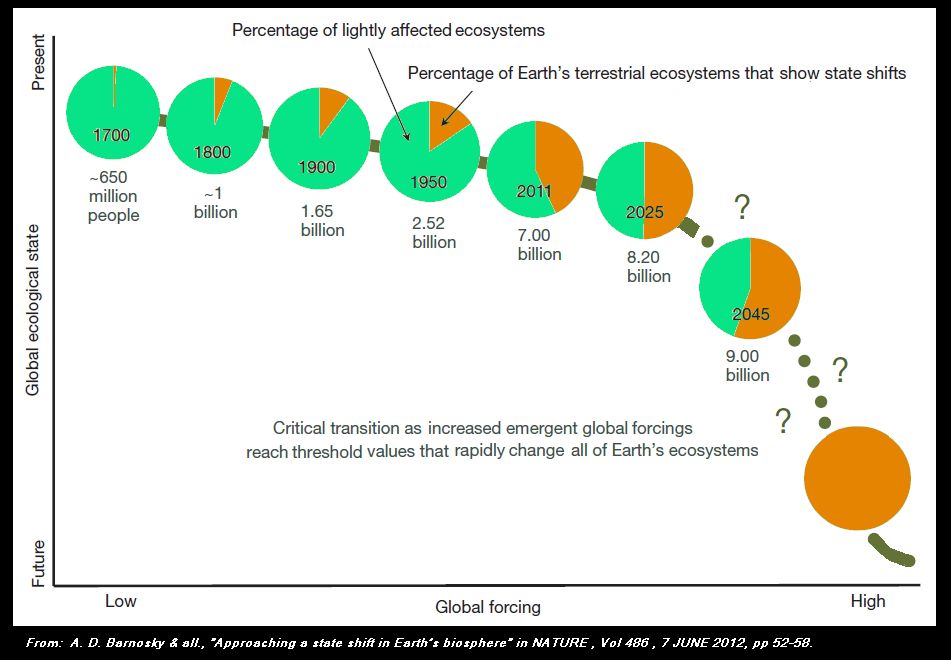
In addition, like which happens in any type of ecological series, we scatter our wastes in all of our ecosystem and, as we are everwhere, our ecosystem is the entire Biosphere: Since the beginning of the twentieth century we water the whole Earth with our chemical, oil, plastics, biochemical residues, our artificial molecules are everywhere and, in addition, since the middle of the last century, the second world war, we add radioactive materials, all that in quantities, concentrations and emission frequencies more and more accelerated, increasingly close. We even change the shape and composition of the atmosphere (ozone holes).
Since less than 150 years, the polluting impact of the human species has exploded the Biosphere limits, and the extent of its damages shows that it will not be able to survive in its wastes anywhere on this planet.
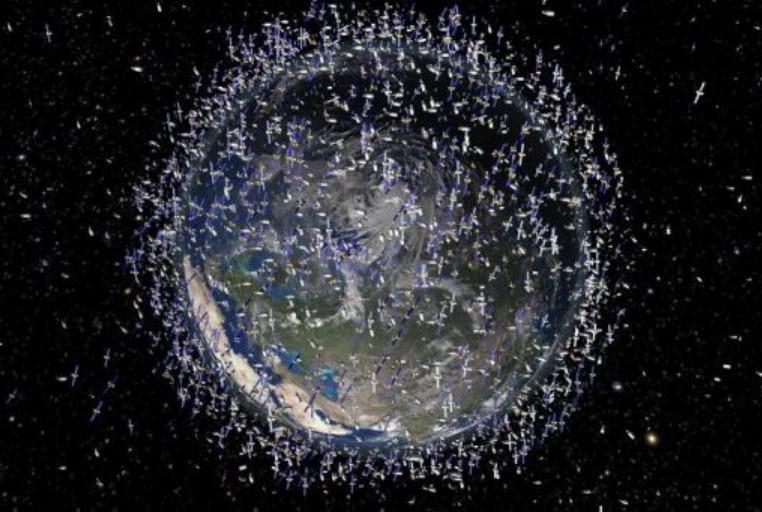
The "icing on the cake," the Ultimate Crime Against Life, along with the staggering explosion of our amount of wastes, is to have dared to directly attack - in depth and in the entire Biosphere - as many as possible species genomes itselves, with our pesticides, our sex hormones, our nuclear, our "genetically modified organisms biotechnology." (see References below)
Since life exists on this planet, more than 3.5 billion years ago, this is the first time that the entire biosphere suffers a so violent, so abrupt and so general attack. The emergence of the human species is the fastest change ever known for a geological era, the most drastic ever endured regression.
The first attempt of Life to acquire the time consciousness up to invent the conceptualization owns all of a resounding and extremely expensive fail:
From what we can anticipate today based on our considerable but rudimentary knowledge, biomes will all change state. It is obvious that having saturated the entire Biosphere with far more than our natural wastes, we will not see this change. The last human will be dead of that long before. Our anticipation stammering power can not yet allow us to say whether the Biosphere will really be able to get back or if it will disappear too. However, it is certain now that the one we know today will not survive us. At best, Life will have to reorganize its level very close to the one it had during the Precambrian era. An extraordinary step backward, but on which today no one can anticipate what the rare of the most elaborated genomes in the possibly surviving species will allow to keep as genetical assets.
All the indicators we have learned to elucidate are in the red, they all indicate that the real big crisis is almost upon us, that it has actually started, and its major global impacts is now a matter of a few decades. I don't know if I will see it, I'd prefer to avoid it, but I know that today's children will see it before reaching their old age, they will die by numbers, almost to the last.
